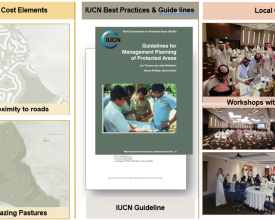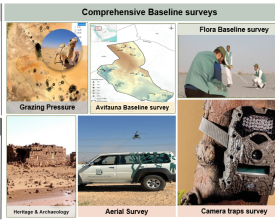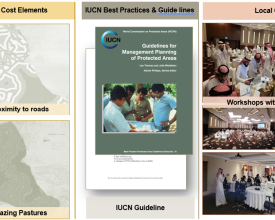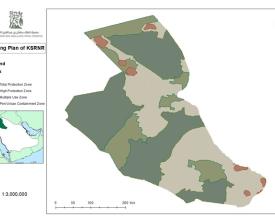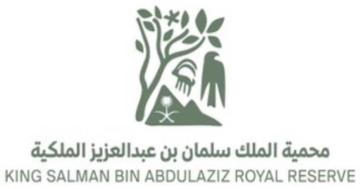
Using Systematic Conservation Planning to Identify Priorities for Management In King Salman Bin Abdulaziz Royal Reserve, Saudi Arabia: A Multi-Objective Zoning Plan
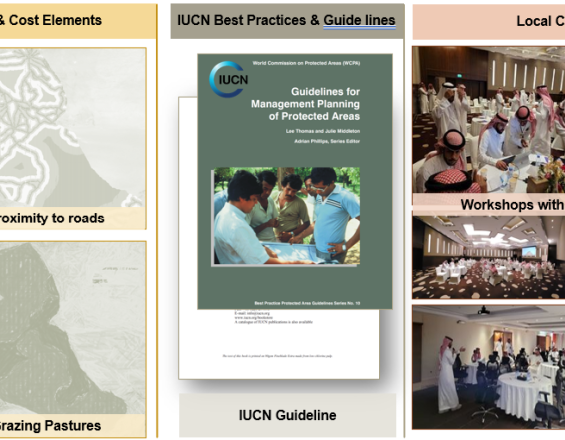
King Salman Bin Abdul Aziz Royal Reserve is a mega reserve (KSRNR) declared to promote resource conservation and sustainable use. The reserve is huge, the designated area has about 460,000 people either living in or around it. A reserve with such a large extent and a large number of interacting populations is expected to have a lot of encroachments and land use conflicts. Protected area zoning is a management strategy used to define and delimit land units for specific purposes, such as critical conservation areas and recreation areas. KSRNR aims to achieve a multi-objective management approach for management. The area is a mega reserve of more than 130,000 Km2. KSRNR also contains a lot of cultural and heritage sites targeted by the tourism industry but are still in their infancy. Growth of such an industry is imminent and planning in KSRNR should be a step ahead to ensure the endurance and sustainability of this valuable resource. Thus, tourism is regulated by KSRNR.
Context
Challenges addressed
Tabouk, ElJouf, Hael, and Turaif surround the reserve on all four sides. Encroachments and human activities are prevalent in and around the reserve. Unregulated overgrazing by camel flocks entering and leaving the reserve is the main encroachment. There are significant mining reserves in the Reserve.
KSRNR lacks contemporary data about fauna and flora. That was one of the main and essential obstacles facing the Systematic Conservation Planning (SCP) approach. Species Distribution Models (SDMs) were built using historical records of fauna and flora to inform zoning decisions.
Managing resources and conserving endangered species requires a management plan. Multiple objectives within Protected Areas (PAs) require planning to reduce potential trade-offs between biodiversity conservation and human activities. Managing resources effectively requires balancing multiple objectives.
Location
Process
Summary of the process
The zoning solutions provided are constructed from several foundational elements, each contributing to the final outcome in distinct ways. The first element involves establishing the management objectives of the reserve from a strategic perspective. These strategic objectives include:
- Biodiversity and Ecosystem Conservation: This involves the restoration of habitats and the reintroduction of indigenous flora and fauna to revitalize the area's biodiversity.
- Promotion of Ecotourism: Creating opportunities for ecotourism and developing the reserve as a destination for backcountry tourism and safari tours.
- Support for Local Economies: Encouraging sustainable resource utilization, such as pastures and groundwater, to bolster the economic well-being of local communities
The second foundational element entails planning to identify key species and conservation features that require prioritization. Conservation targets are established for each of these features within the zoning plan, indicating the percentage of conservation required. This process involves:
- Identifying Priority Conservation Features: Determining the key species and conservation elements crucial for preservation
- Setting Conservation Targets: Establishing specific conservation goals for each feature
Building Blocks
Local Community engagement
The local community was consulted into the spatial planning process. The process involved holding big workshops for local community and inviting several interest groups, especially those of livestock owners, tourism workers, and hunting enthusiasts. The purpose was 2 main things; 1) to collect local data and knowledge into the planning product and more importantly to build a sense of ownership and belonging of the local community to the potential planning product.
Data from various sources were collectively integrated and put into a spatial prioritization and optimization algorithm based on targets stemming out from the Primary Management objectives of the Reser. This Algorithm is known as MARXAN working under a process termed as simulated annealing.
The resulting planning product is then shared back to the local community and other stakeholders including governmental and non governmental entities to collect thier feedback to further tweak the product for maximum sustainability.
Impacts
The most significant impacts of developing the zoning plan are :
- Having a transparent and justifiable standard for managing the reserve and land use authorization decisions through providing meaningful regulations and thresholds for acceptable levels of various activities.
- Building the feeling of involvement and ownership in the reserve by the local communities and other stakeholders through the asking-for-input approach.
- Building a fair corporate image of the Reserve Development Authority through the delineation of the management zones and communicating it to the public and stakeholders in a fair way.
Beneficiaries
KSRNR is seeking a multi-objective management plan with a participatory involvement of the local communities to promote ecosystem conservation, Ecotourism development, and sustainable use of the resources by local communities.
Sustainable Development Goals
Story
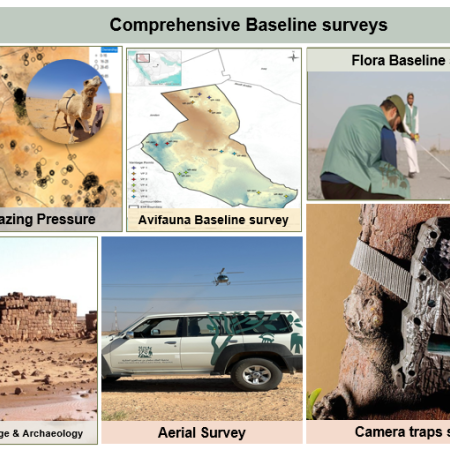
A statutory Zoning Plan is one of the key management tools used in Protected Areas; it is a critical component to help comprehensively manage the range of multiple uses that occur. KSRNR adopted the state-of-the-art methodology of Systematic Spatial Conservation Planning implemented through the MARXAN with Zones algorithm. The current zoning scheme of King Salman Bin Abdulaziz Royal Reserve came into effect in March 2023 when it was approved and endorsed by the board of directors. The Reserve is divided into four main zones that allow for the different levels of conservation and are aligned to the strategic management objectives. It provides high levels of protection for key areas that are termed as Total Protection Zone totalling 45.73% (= 59,449 km2). This zone represents the highest environmental and natural values of the landscape, fauna and flora of the reserve and thus enjoys the top level of restrictions of activities towards maximum conservation of biodiversity and ecological services. On the other side of the spectrum, there is the Multiple Use Zone (totalling 36.54% (= 47,502 km2) with more relaxed restrictions allowing for more activities with regulations crafted in a way to ensure sustainable use of resources. As well as the statutory Zoning Plan, a range of other spatial and temporal management tools are used to ensure the conservation and management of KSRNR. Effective conservation of floral resources requires more than just a zonation but also active regulation of ranges and pastures where free grazing is allowed and accompanied by enforcement of range and numbers rules.
